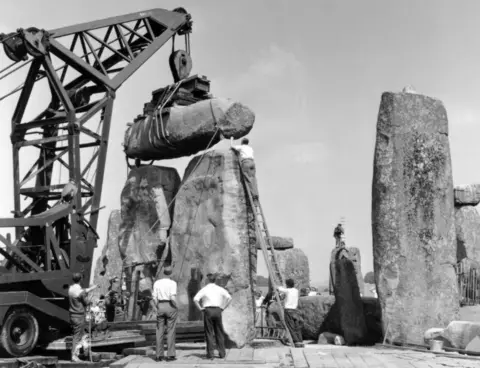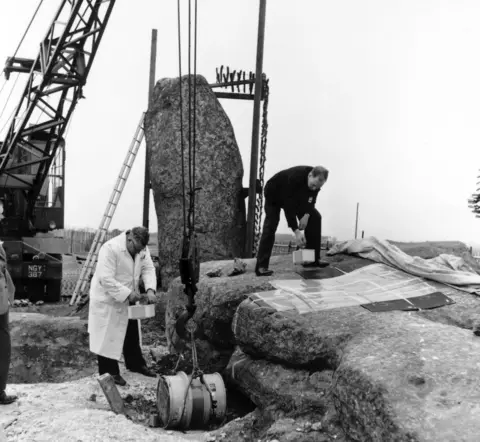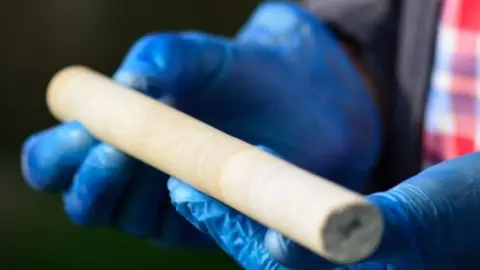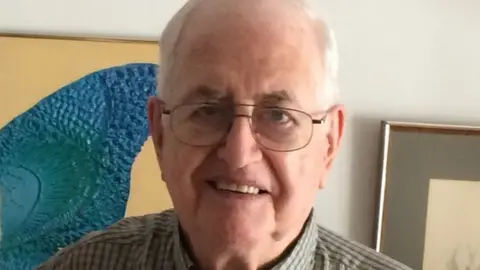Missing part of Stonehenge returned 60 years on
 Historic England
Historic EnglandA missing piece of Stonehenge has been returned to the site 60 years after it was taken.
A metre-long core from inside the prehistoric stone was removed during archaeological excavations in 1958.
No-one knew where it was until Robert Phillips, 89, who was involved in those works, decided to return part of it.
English Heritage, which looks after Stonehenge, hopes the sample might now help establish where the stones originally came from.
In 1958 archaeologists raised an entire fallen trilithon - a set of three large stones consisting of two that would have stood upright, with the third placed horizontally across the top.
During the works, cracks were found in one of the vertical stones and in order to reinforce it, cores were drilled through the stone and metal rods inserted.
The repairs were masked by small plugs cut from sarsen fragments found during excavations.
 English Heritage
English Heritage English Heritage
English HeritageFor 60 years Mr Phillips, an Englishman who now lives in retirement in Florida, kept his piece of Stonehenge - first in a plastic tube at his office in Basingstoke and later on the wall at home in the US.
In the 1950s he had been employed by a diamond-cutting firm brought in to help reinforce the giant stones.
 Family photo
Family photoThe company, Van Moppes, bored three holes into one stone before stabilising metal rods were inserted.
During the process workers extracted three 1m-long (3ft) cores of stone and Mr Phillips took one of them.
But on the eve of his 90th birthday, he decided to return it.
 Family photo
Family photoArchaeologists hope to analyse the chemical composition of the core to try to pinpoint where the ancient Sarsen stones might have come from.
Although the sample was handed back last May, English Heritage said it had not announced the find until now as it had to first understand its significance.
Historic England said the stone sample looks "incongruously pristine" alongside the "weathered" stones currently standing at the monument.
The smaller bluestones at Stonehenge were brought to the site from the Preseli Hills is south west Wales but the source of the larger Sarsen stones is unknown.
The discovery of part of the missing core now means a team will be able to analyse it in order to "pinpoint their source".
Researchers have already used a spectrometer to look at the chemical composition of the stone.
The whereabouts of the other two Stonehenge cores remains a mystery and English Heritage is appealing for anyone with any information to contact them.
Heather Sebire from English Heritage said "the last thing we expected was to get a call from someone in America saying they had part of Stonehenge".
"Studying the Stonehenge core's DNA could help tell us more about where those enormous Sarsen stones originated," she added.
Prof David Nash from Brighton University, which is leading the study into the stone core, said it was possible the Sarsen stones came from multiple locations.
"Conventional wisdom suggests they they all came from the relatively nearby Marlborough Downs," he said.
"But initial results from our analysis suggest that in fact the Sarsens may come from more than one location."
